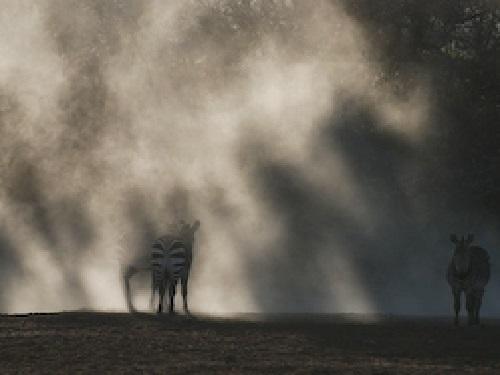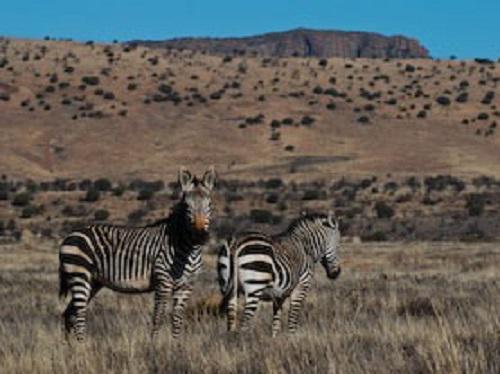Halszka Hrabar
The project aims to gain a better understanding of current threats to Cape mountain zebra conservation, such as problems associated with small isolated populations. Activities necessary to deal with these threats will be identified and a comprehensive conservation and management plan will be compiled.

Bachelor stallions after an afternoon dust bath.
Despite the increase in Cape Mountain zebra (CMZ) numbers to 2700 individuals at present, the security of the sub-species is still questionable due to a number of threats, which this project aims to address. The high number of small, isolated populations is of concern, for example, and the majority of sub-populations (34 out of 52) are on privately owned land and are often managed in an un-informed and isolated manner.

Cape mountain zebra mare and foal.
The project therefore aims to determine/address the following:

1) Primary factors influencing population performance of CMZ
2) Factors determining the successful translocation and initial reintroduction of CMZ
3) Determinates of reproductive sex allocation in CMZ
4) The effect of re-introduction of predators on resource use and demographics of CMZ
5) Advise/train private owners/managers on management recommendations
6) Set up a networking system for owners/managers to communicate with one another.
Information on most subpopulations (zebra number, deaths, translocation information and population performance) and properties (size, location, rainfall, vegetation) has been collected by means of a questionnaire. More detailed information such as individual zebra identification (photographic record), age and sex of individuals, herd composition and female social rank will now be collected from a sample of populations spread across the distribution range. Populations will be visited towards the end of 2010 and again in mid-2011, enabling two years of foal data to be obtained. Managers will also be trained in data collection.
Increased monitoring efforts (especially over a long period) will enable an improved understanding of behavioural aspects such as dispersal from natal groups, mate choice by females and inheritance of maternal dominance. This will not only be of scientific interest, but this knowledge will also help reveal the degree and potential threat of inbreeding in populations, and populations can then be managed accordingly.
An improved understanding of the factors affecting population performance will be of great use for future conservation efforts. Apart from the improved management of individual sub-populations, the information will also be vital for composing a comprehensive conservation and management plan for CMZ. Current and potential threats to the subspecies will be identified, activities necessary to deal with these threats will be listed and indicators/outcomes that can be used to assess the progress/success from these activities will also be identified. The setting up of a communication network between managers as well as scientists will also facilitate appropriate management actions.